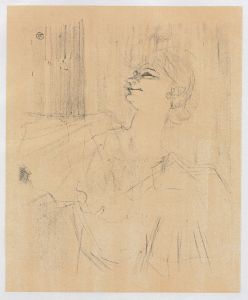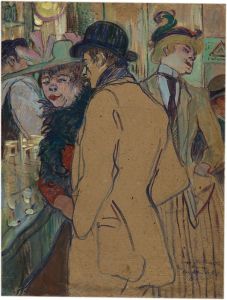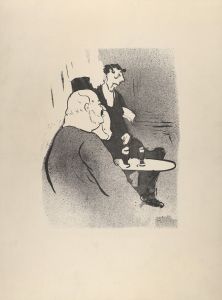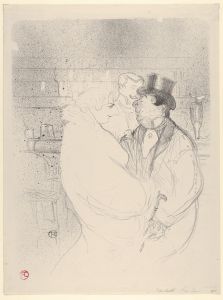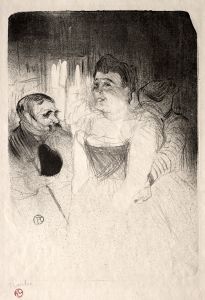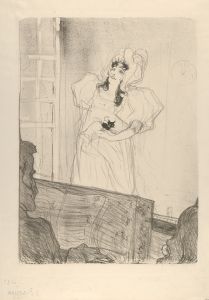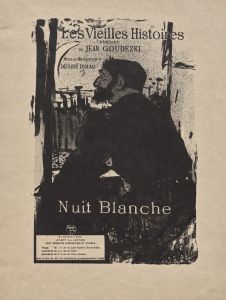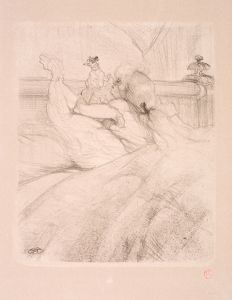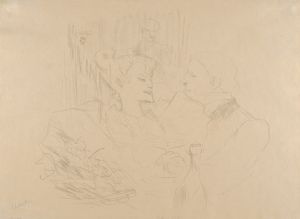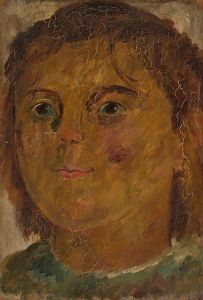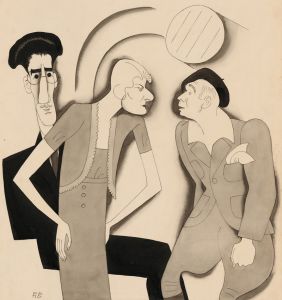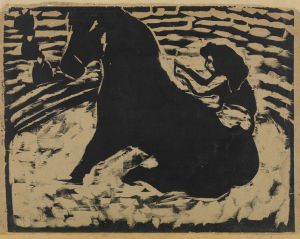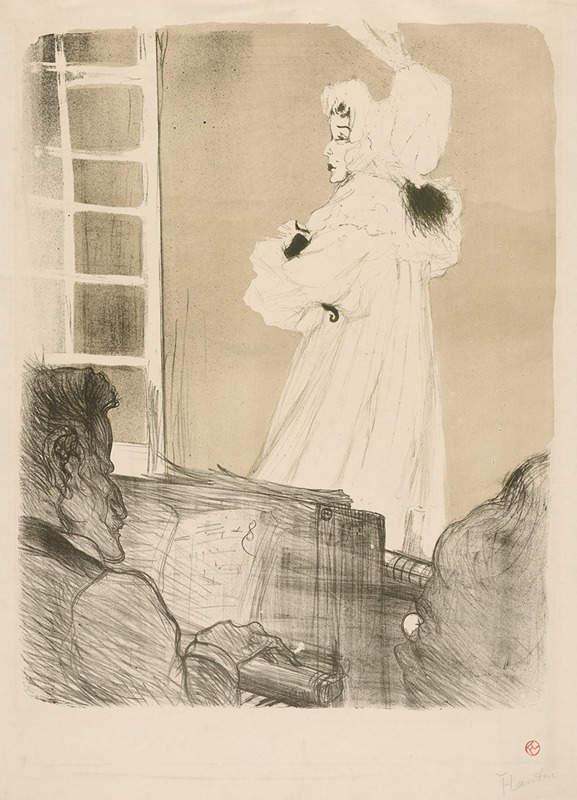
Miss May Belfort
A hand-painted replica of Henri de Toulouse-Lautrec’s masterpiece Miss May Belfort, meticulously crafted by professional artists to capture the true essence of the original. Each piece is created with museum-quality canvas and rare mineral pigments, carefully painted by experienced artists with delicate brushstrokes and rich, layered colors to perfectly recreate the texture of the original artwork. Unlike machine-printed reproductions, this hand-painted version brings the painting to life, infused with the artist’s emotions and skill in every stroke. Whether for personal collection or home decoration, it instantly elevates the artistic atmosphere of any space.
Henri de Toulouse-Lautrec, a prominent French painter and illustrator, is well-known for his depictions of Parisian nightlife in the late 19th century. Among his many works, "Miss May Belfort" stands out as a significant piece that captures the essence of the era and the unique character of its subject. Painted in 1895, this artwork is a portrayal of May Belfort, an Irish singer and performer who was a notable figure in the Montmartre cabaret scene.
Toulouse-Lautrec's "Miss May Belfort" is a lithograph, a medium the artist frequently employed to capture the vibrant and dynamic atmosphere of Parisian entertainment venues. The piece is characterized by its bold lines and striking use of color, typical of Lautrec's style, which was influenced by both Japanese prints and the Impressionist movement. The lithograph depicts May Belfort in a theatrical pose, dressed in a distinctive costume that she was known for during her performances. She is shown wearing a black dress with a large white collar and a red bow, holding a small black cat, which was part of her stage persona. This imagery was often associated with her performances, where she sang songs with a playful and sometimes provocative edge.
May Belfort was a popular performer in Paris during the 1890s, known for her baby-like voice and her signature song "Daddy Wouldn't Buy Me a Bow-Wow," which contributed to her fame. Her performances were characterized by a blend of innocence and suggestiveness, a combination that fascinated audiences and made her a favorite subject for artists like Toulouse-Lautrec. The artist's depiction of Belfort captures this duality, emphasizing her theatricality and the whimsical nature of her act.
Toulouse-Lautrec's work often focused on the personalities and performers of the Montmartre district, an area known for its bohemian lifestyle and vibrant arts scene. By portraying figures like May Belfort, Lautrec not only documented the cultural milieu of the time but also highlighted the individuality and charisma of these performers. His ability to convey the essence of his subjects with minimal detail and expressive lines is evident in "Miss May Belfort," where the simplicity of the composition belies the complexity of the character portrayed.
The lithograph is part of a series of works by Toulouse-Lautrec that feature performers from the Montmartre cabarets, including other famous figures like Jane Avril and Yvette Guilbert. These works collectively offer a glimpse into the world of late 19th-century Parisian entertainment, capturing the spirit and energy of a time when the city was at the forefront of artistic innovation.
Today, "Miss May Belfort" is appreciated not only for its artistic merit but also for its historical significance, providing insight into the cultural landscape of Paris during Toulouse-Lautrec's lifetime. The piece is held in various collections and continues to be studied and admired for its contribution to the legacy of both the artist and the era he so vividly depicted.







